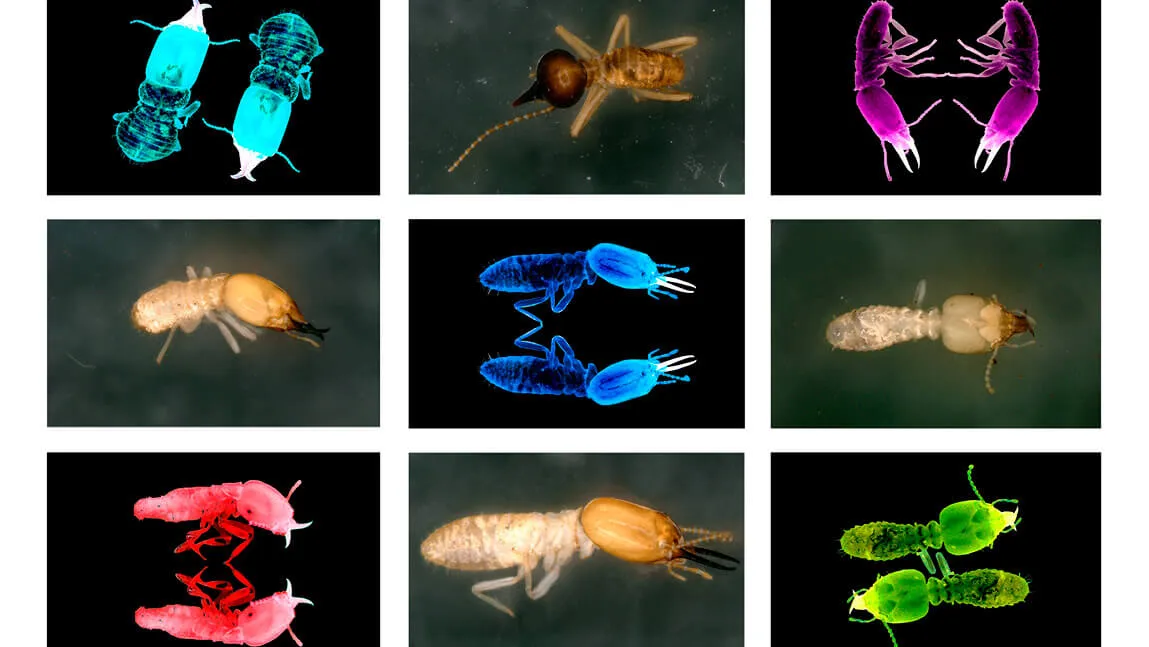Most people think termites are a nuisance that consume wood in homes and businesses. But these termites represent less than 4 percent of all termite species worldwide.
Termites are critical in natural ecosystems because they help recycle dead wood from trees. Without such decayers, the world would be piled high with dead plants and animals. But these energetic wood-consuming insects could soon be moving from the tropics toward the North and South poles as global temperatures warm from climate change.
A new international study co-authored by University of Vermont researchers explored termites’ pivotal role in breaking down wood, and contributing to the earth’s carbon cycle, in the face of climate change.
For the study, published in the journal Science, more than 100 collaborators studied locations across the globe where bacteria and fungi (microbes) and termites consume dead wood. Led by University of Miami’s Amy Zanne, the study investigated how temperature and rainfall could impact the discovery and decay of wood by using the same experimental set up at more than 130 sites in a variety of habitats across six continents.
A Look at Temperate Forests in Vermont
Carol Adair, Associate Professor in the Rubenstein School of Environment and Natural Resources and Gund Institute for Environment Fellow at the University of Vermont, conducted research at multiple sites on Mt. Mansfield in Vermont over a two-year period as a part of the study. While no termites were detected at these sites, Adair and her fellow researchers—Gund Affiliate Aimee Classen, and Rubenstein School Professors Eric Roy and Bill Keeton—outlined the potential impacts of termites migrating north.
“Temperate forests have been carbon sinks for the past several decades and, of course, some of this carbon is stored in dead wood,” said Adair. “The migration of termites into Northeastern forests would be a game changer and could shift our forests from carbon sinks to carbon sources.”
The size of the annual forest carbon sink in temperate forests is slightly smaller than the amount of carbon stored in dead wood, so termite activity would reduce the capacity of dead wood to store carbon.
Microbes vs. Termites
Study collaborators learned that termites are very sensitive to temperature and rainfall, so as temperatures heat up, the insect's role in wood decay will likely expand beyond the tropics and that areas with high termite activity should increase as the earth becomes warmer and drier. Amy Austin, associate professor of ecology at Universidad de Buenos Aires said the global study helped scientists glean broader insight about wood decay.
“The inclusion of arid, hot bioregions, particularly in the Southern Hemisphere, where termites are often plentiful and active, allowed for novel insight into their role in carbon turnover,” Austin said. “As ecologists, we may need to broaden our consideration of woody ecosystems beyond a closed-canopy forest and recognize that woody carbon stores in drier ecosystems are an important component of the global carbon cycle.”
Although microbes and termites both decompose dead wood, there are important differences between them. While microbes need water to grow and consume wood, termites can function at relatively low moisture levels. In fact, termites can search for their next meal even if it is dry out and carry what they want back to their mounds, or even move their colony into the wood they are consuming.
“Microbes are globally important when it comes to wood decay, but we have largely overlooked the role of termites in this process. This means we are not accounting for the massive effect these insects could pose for future carbon cycling and interactions with climate change,” Zanne added.
Like little cows, termites release carbon from the wood as methane and carbon dioxide, which are two of the most important greenhouse gases. Therefore, termites may increasingly contribute to greenhouse gas emissions with climate change.
Zanne created the global initiative through social media and word of mouth, including researchers across career stages and locations with everyone running the same experiment using locally sourced materials.
The study, “Termites sensitivity to temperature affects global wood decay rates,” was published in the Sept. 23 edition of Science and is available online.
More information is available via the University of Miami’s press release.
